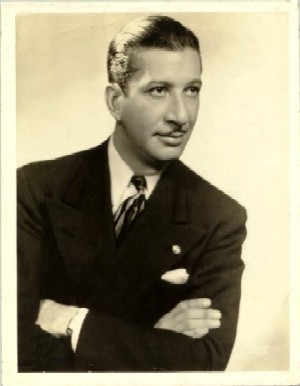Fred Elizalde was one of Britain’s most prominent musicians during the 1920’s. However, his career is not well-documented beyond 1932. Fred (Federico), was born in 1907, in Navarra (Spain), to a family of plantation owners in the Philippines. Information from Myriam Horngren (grand-daughter to Federico). Federico was a pianist as a child and then he and his brother Lizz (Manuel), were sent to the USA (Stanford), to study law. They discovered jazz, and they embraced it to their detriment in law school. Lizz moved to Cambridge, England to continue his education. Lizz joined The Quinquaginta Band as an alto sax player. Fred moved to England and took over the leadership of The Quinquaginta Band. He also changed its name to The Quinquaginta RAMblers. The band was already recording (Brunswick) by 1927, including Elizalde compositions. Record buyers and top London band leaders were attracted to the band’s hot arrangements. The Savoy Hotel took the opportunity to sign the 19-year-old and his band up for their second ballroom. Reg Batten led a new Savoy Orpheans group. Fred sent Lizz to America to find jazz musicians. He was lucky to get Bobby Davis, Chelsea Quealey and Adrian Rollini – all ex-California Ramblers. Soon, the Savoy was resounding with the sounds of blues and jazz. This new sound was a big hit and Fred quickly became the hottest celebrity in London. After a lot of criticism about Fred’s music, the Savoy decided to terminate the contract in 1929. Fred took the band out on tour, but it failed. His music was too advanced for most people. Nick Dellow provided me with more information about Fred Elizalde’s career. Nick also contributed to John Chilton’s “Who’s Who Of British Jazz”. These details are reproduced below with Nick’s permission. Elizalde’s band recorded two of Elizalde’s film scores after the Savoy residency was over. The group then toured North England (September 1929), and Scotland (December 1929). Elizalde composed the music and provided the band for the Intimate Revue’s short-lived March 1930 tour. The band disbanded in Biarritz where he continued his studies and composition of classical music. World concert tour (1931). Then moved to Paris. In 1932, visited London to record popular music. Then moved to Spain where he wrote the opera Le Pajara Pinta. Study with Manuel de Falla. Conducting various orchestras in Spain. A brief return to London in the late 1930s for recording purposes. Then, he returned to Biarritz in May 1934. In April 1935, his Sinfonie Concertante premiered in Spain. He composed and conducted 1935-6. After that, he was an officer in General Franco’s Army (a Basque regiment), during the Spanish Civil War. Invalided and decorated after being wounded at Oviedo. In late 1937, he was moved to the Philippines. He returned to Paris in 1930s. During the German occupation, he remained in Bayonne at his chateau. He continued to compose. He moved to Santa Monica, California (1946), and performed his own piano concerto in London (1948). The London Symphony Orchestra recorded his Violin Concerto in 1950. In the 1950s, he was president of the Manila Broadcasting Corporation and the Manila Symphony Orchestra. He briefly directed the Orchestra of Japan Broadcasting Commission in the 1960s, but returned to Manila where he gave his final concert in 1974. He was an avid sportman, and he led the Philippines’ shooting team to the 1954 Asiad. They won four gold medals. Fred Elizalde was killed in Manila in 1979.
